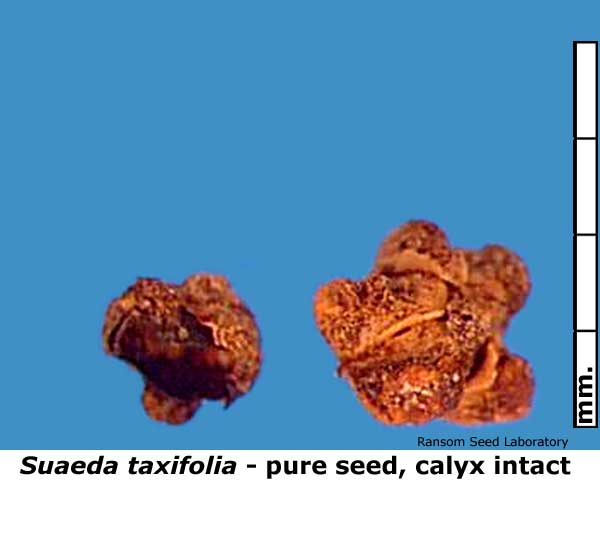Suaeda taxifolia Standley
Woolly sea-blite
Family: Chenopodiaceae
Habit: Shrub to 15 dm., glabrous to densely hairy.
Distribution: Coastal bluffs, margins of salt marshes of southern California coast, Channel Islands to Baja California, Mexico.
Seed unit: Utricle; free seed.
Seed: 1-2 mm., lenticular, shiny and black or brown. Nearly circular, except for a slightly hooked projection and notch at the margin. Often enclosed in a persistent calyx.
Embryo: Spirally coiled embryo with a thin firm, semi-transparent endosperm on each side.
Purity instructions: Pure seed definition:
AOSA: PSU#38 - Intact utricle with or without perianth, whether or not a seed is present. Piece of broken utricle larger than one-half the original size, unless no seed is present. Seed with or without seed coat.
Lab notes: Calyx may persist, covering the seed. Seed is often brittle and empty. Samples often contain many empty floral parts, which can be easily confused with pure seed units.
Average pure seed units per gram: 1476 seeds per gram (based on AOSA pure seed units only from 8 samples received for testing from 1998 to 2003.
Range of percent pure seed: 36% to 53%
Range of percent inert: 46% to 62%
Description of inert: Plant material, broken seed.
Planting instructions: 400 seeds, TB, 21 days @ 20°C; for fresh and dormant seed, prechill recommended.
References: (link to main reference page)
Hickman, J.C., Ed. 1993. p. 515.
Martin, A.C. and W.D. Barkley. 1961. p. 152.
Ransom Seed Laboratory










